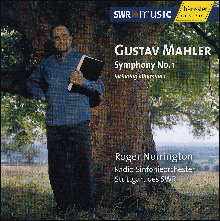 In a New Yorker essay last June on “how technology has transformed the sound of music,” Alex Ross pointed out that string vibrato — “that trembling action of the hand on the fingerboard, whereby a player is able to give notes a warbling sweetness” — developed as a basic orchestral sonority only in the 20th century. No less a violinist than Fritz Kreisler championed its consistent application. But as Ross added, citing Mark Katz’s Capturing Sound: How Technology Has Changed Music, “the fuzzy focus of vibrato enabled players to cover up slight inaccuracies of intonation.” It was even an advantage in the nascent art of recording: “When a wobble was added to violin tone, the phonograph was able to pick it up more easily.”
In a New Yorker essay last June on “how technology has transformed the sound of music,” Alex Ross pointed out that string vibrato — “that trembling action of the hand on the fingerboard, whereby a player is able to give notes a warbling sweetness” — developed as a basic orchestral sonority only in the 20th century. No less a violinist than Fritz Kreisler championed its consistent application. But as Ross added, citing Mark Katz’s Capturing Sound: How Technology Has Changed Music, “the fuzzy focus of vibrato enabled players to cover up slight inaccuracies of intonation.” It was even an advantage in the nascent art of recording: “When a wobble was added to violin tone, the phonograph was able to pick it up more easily.”
Does that mean that your favorite performances of everyone from Bach to Berg don’t really sound the way the composer intended? Roger Norrington thinks so. In the liner note to his new Hänssler Classic recording of Gustav Mahler’s First Symphony, the Handel and Handel Society’s new artistic adviser writes, “Brahms, Wagner, Tchaikovsky, Bruckner, Mahler, and Berg never heard an orchestra with vibrato; it simply wasn’t a part of their experience. So the Stuttgart Radio Symphony Orchestra and I have spent six years developing the sound that these composers were used to — a clear, honest tone with the most wonderful possibilities for phrasing, coherence, and transparency.”

Norrington has actually spent decades trying to develop the sound that pre-20th-century composers were used to, starting with the London Classical Players, whose recordings included all nine Beethoven symphonies and Berlioz’s Symphonie fantastique. The absence of continuous vibrato is only one aspect of that sound. There’s seating. Pre-20th-century composers wrote conversations for the first and second violins, often passing themes back and forth, and so orchestras sat with the violins deployed antiphonally, firsts on the conductor’s left, seconds on his right. In the 20th century, orchestras began to sit with the seconds next to the firsts so that they also faced the audience; the result was more brilliant but less transparent and less true. A number of contemporary conductors have returned to the traditional seating, among them Simon Rattle, who leads the Berlin Philharmonic, and James Levine, music director of both the Metropolitan Opera and the Boston Symphony Orchestra. Norrington’s Stuttgart players “also of course sit as Mahler intended, with first and second violins opposite each other, and double basses in a line behind the wind.”
Then there are the instruments. In his note to the 1989 EMI release of the London Classical Players’ Symphonie fantastique, Norrington argues that “using early-19th-century instruments for Berlioz turns out to be almost as revolutionary as using late Baroque ones for Bach.” That includes a cor anglais made by the man “who almost certainly played in the first performance” of the Fantastique, small 1830s Erard harps, old-fashioned valveless trumpets, narrow-bore trombones, and period cornets and ophicleides. But in his note to the 2004 Hänssler Classics release of his Fantastique with the Stuttgart RSO, Norrington sings a different tune: “Fifteen years ago I thought that new ways of playing and of imagining the works of the 18th and 19th centuries could only be done with original instruments. Nowadays I realise that almost everything we did then can be done with a clever orchestra that plays on so-called modern instruments.”
Period performance without period instruments? Not according to Nikolaus Harnoncourt. In the note to his 1997 Teldec recording of Bruckner’s Fourth Symphony with the Amsterdam Concertgebouw, he writes, “The woodwind choir — flute, oboe, clarinet, bassoon — is supposed to be able to hold its own in the face of the battery of three trumpets, four horns, three trombones, and tuba. With modern instruments this is completely impossible.” Philippe Herreweghe goes farther in his 2004 recording of Bruckner’s Seventh Symphony with the Orchestre des Champs-Élysées for Harmonia Mundi: “The use of gut strings makes it possible to achieve a natural balance with the slightly less powerful wind instruments.”
Herreweghe’s model liner note tells us what instruments he’s using (just 44 strings) and how old they are. Harnoncourt doesn’t mention his strings, and though all his performances are informed by period practice, the notes to his Bruckner Seventh and Ninth with the Vienna Philharmonic and Eighth with the Berlin Philharmonic say nothing about vibrato or instrumentation. Herreweghe and Norrington can do what they like with the specialty ensembles they’ve developed, and it’s to Harnoncourt’s credit that he was able to persuade the Concertgebouw wind and brass sections to perform on period instruments, but you can hardly expect the world’s major orchestras to play without vibrato or use rotary-valve trumpets and narrow-bore trombones on a regular basis.